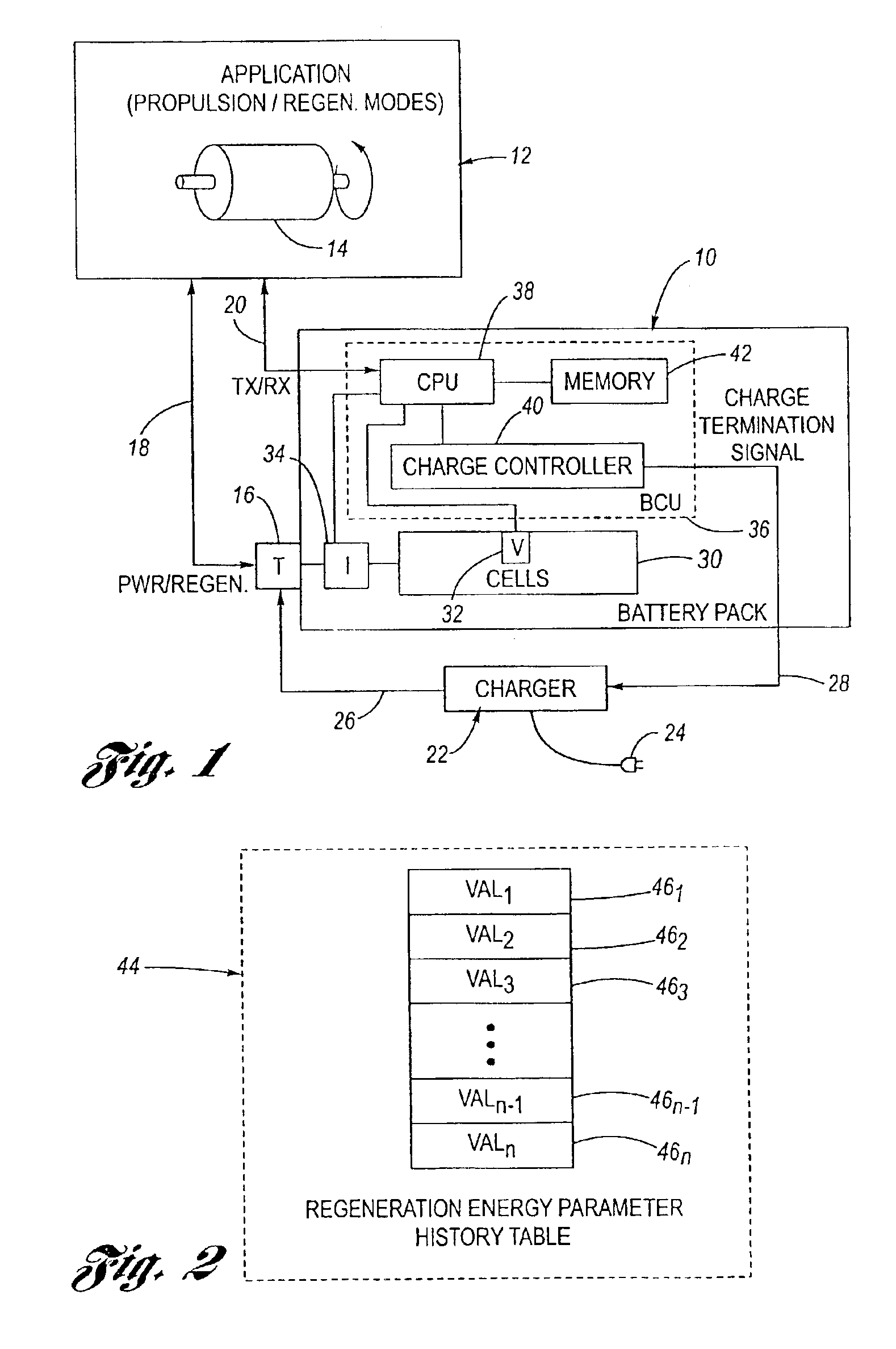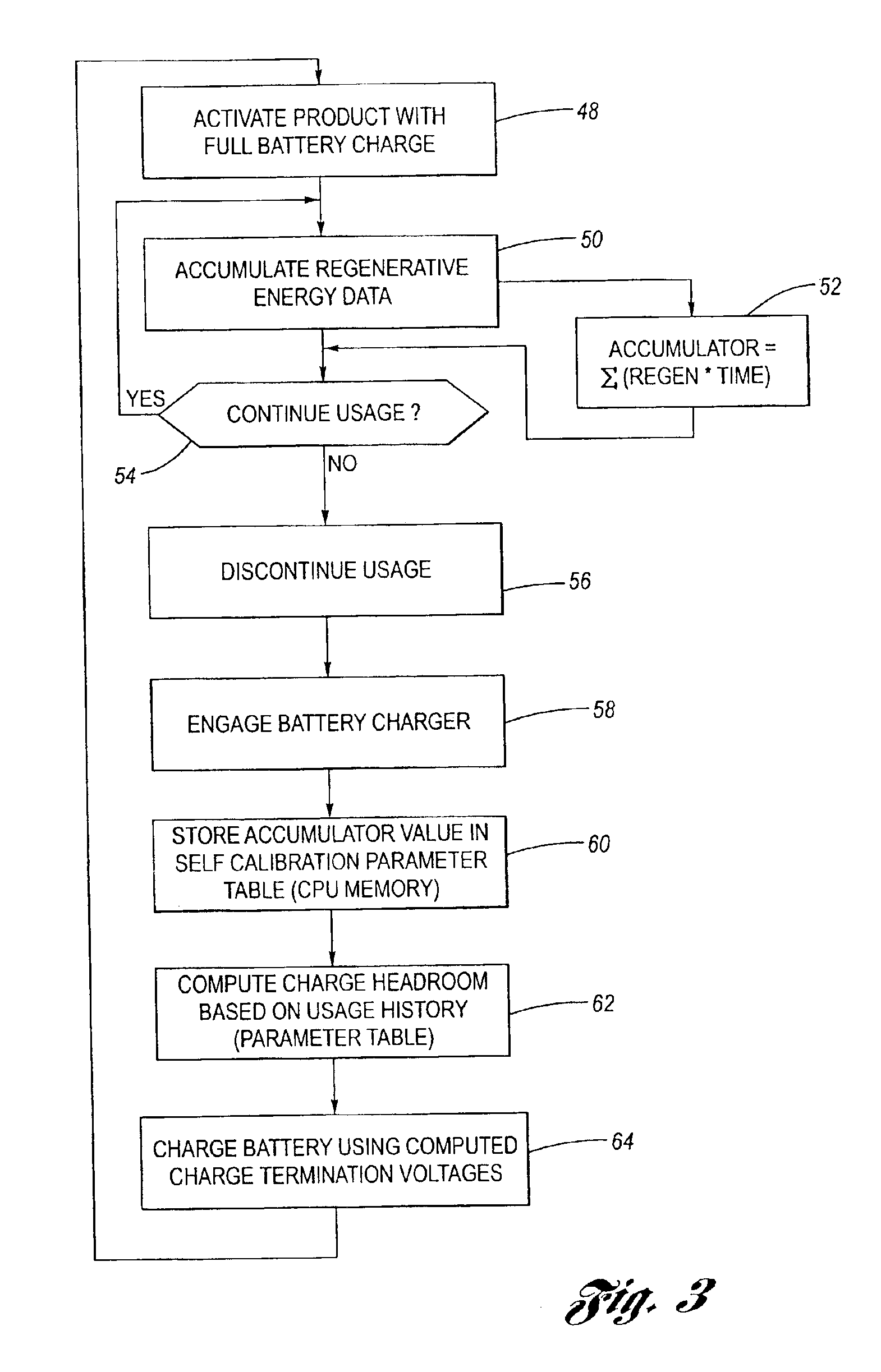Rechargeable battery pack with adaptive regenerative energy control and method thereof
a rechargeable battery and energy control technology, applied in battery/fuel cell control arrangement, secondary cell servicing/maintenance, transportation and packaging, etc., can solve the problem of serious damage to the battery, inflexible fixed headroom approach, and inability to meet the charging regimen where the battery is charged to 100%
- Summary
- Abstract
- Description
- Claims
- Application Information
AI Technical Summary
Benefits of technology
Problems solved by technology
Method used
Image
Examples
Embodiment Construction
[0018]Referring now to the drawings wherein like reference numerals are used to identify identical components in the various views, FIG. 1 is a simplified, schematic and block diagram view of an inventive battery pack 10 according to the invention suitable for use in connection with any one or more of a plurality of exemplary applications 12. Application 12, in the illustrated embodiment, is of the type employing a dynamoelectric machine 14, which may alternatively be configured for operation (i) in a first mode wherein the machine 14 is used for propulsion torque, or (ii) in a second mode different from the first mode wherein the machine 14 is configured for the production of regenerative energy (i.e., it is configured as a generator). For example, such applications may include, but are not limited to, self-propelled vehicle applications, although other application stationary in nature (i.e., rotating systems having loads with inertia) are also included within the spirit and scope ...
PUM
| Property | Measurement | Unit |
|---|---|---|
| charge termination voltage | aaaaa | aaaaa |
| charge termination voltage | aaaaa | aaaaa |
| regenerative energy | aaaaa | aaaaa |
Abstract
Description
Claims
Application Information
 Login to View More
Login to View More - R&D
- Intellectual Property
- Life Sciences
- Materials
- Tech Scout
- Unparalleled Data Quality
- Higher Quality Content
- 60% Fewer Hallucinations
Browse by: Latest US Patents, China's latest patents, Technical Efficacy Thesaurus, Application Domain, Technology Topic, Popular Technical Reports.
© 2025 PatSnap. All rights reserved.Legal|Privacy policy|Modern Slavery Act Transparency Statement|Sitemap|About US| Contact US: help@patsnap.com


